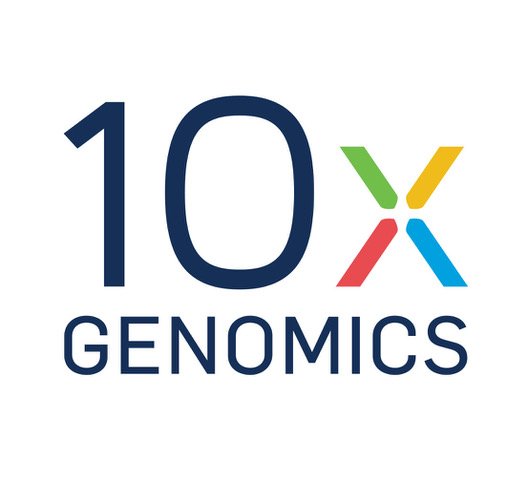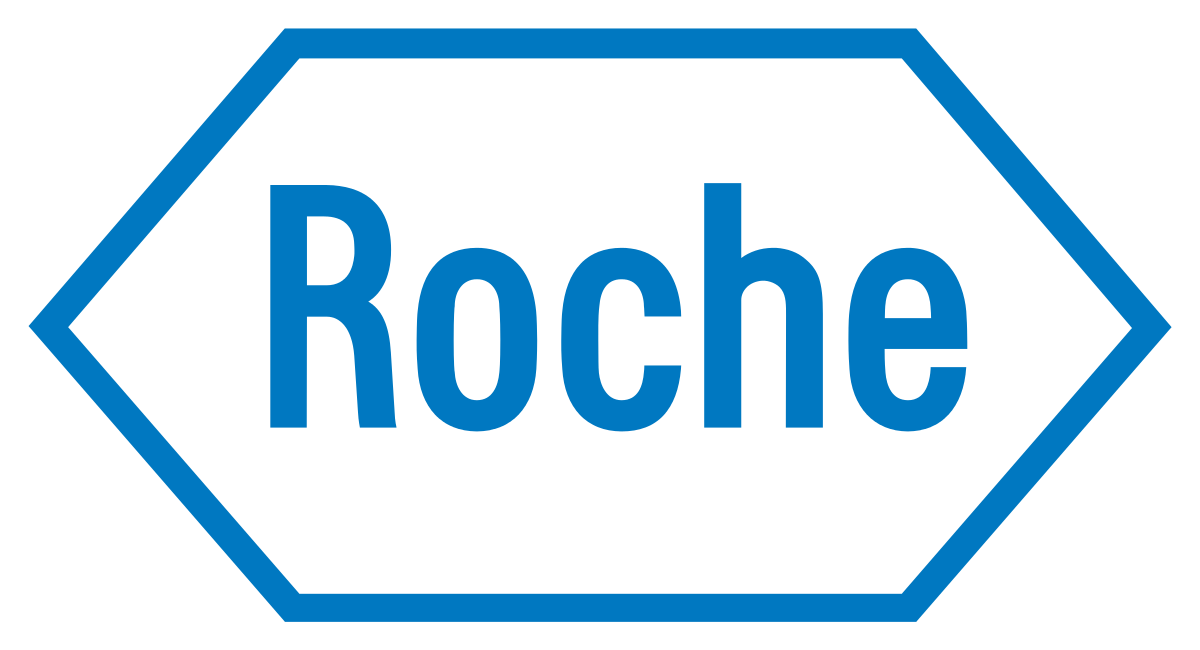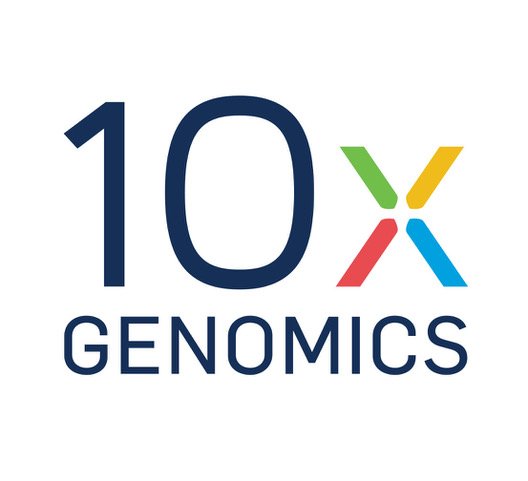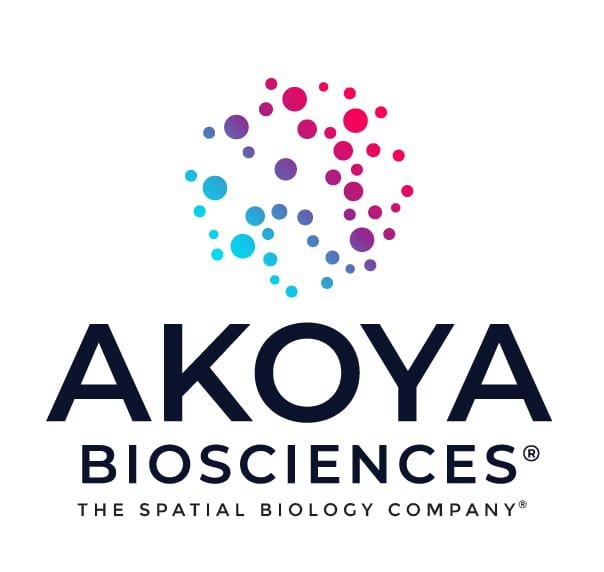
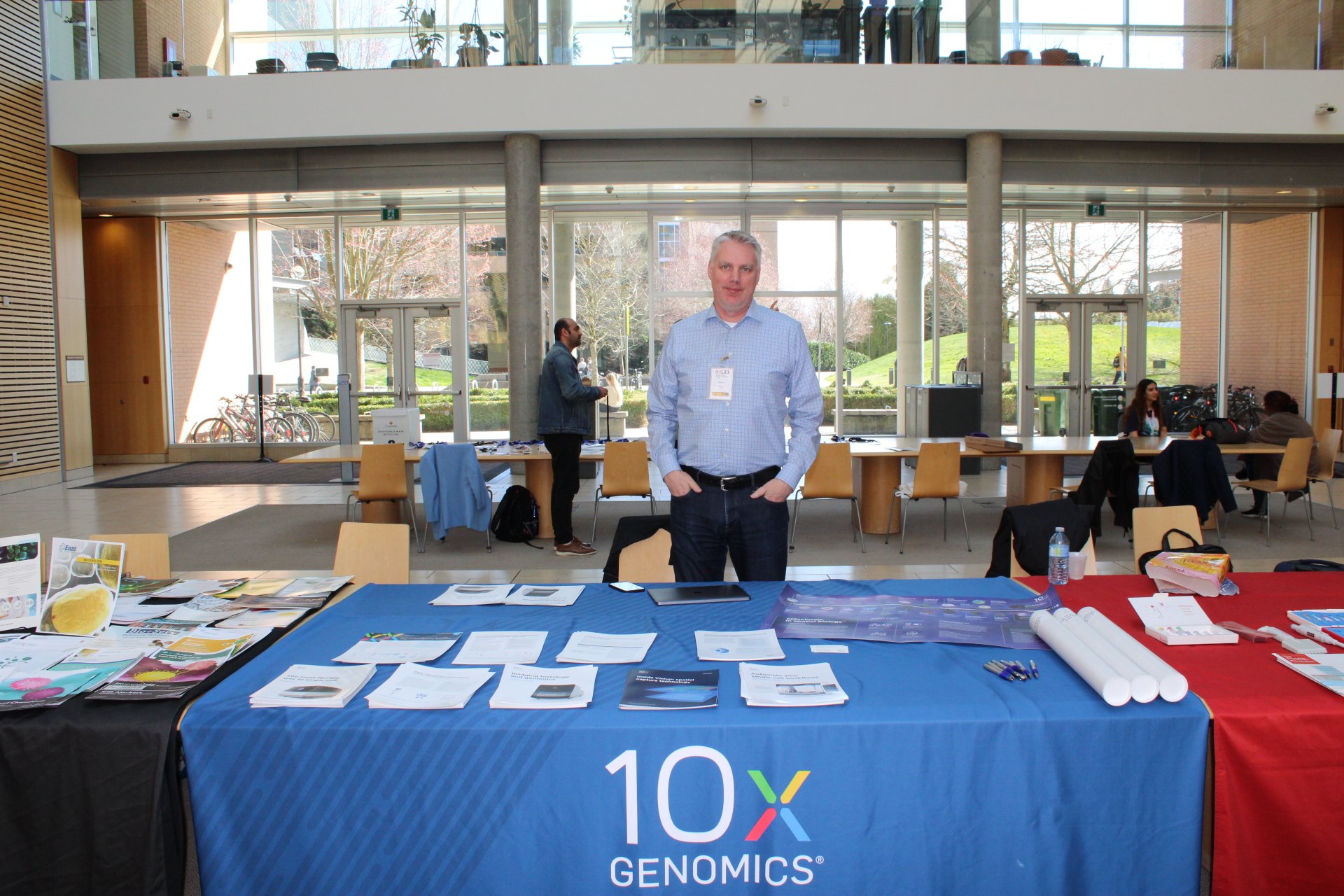
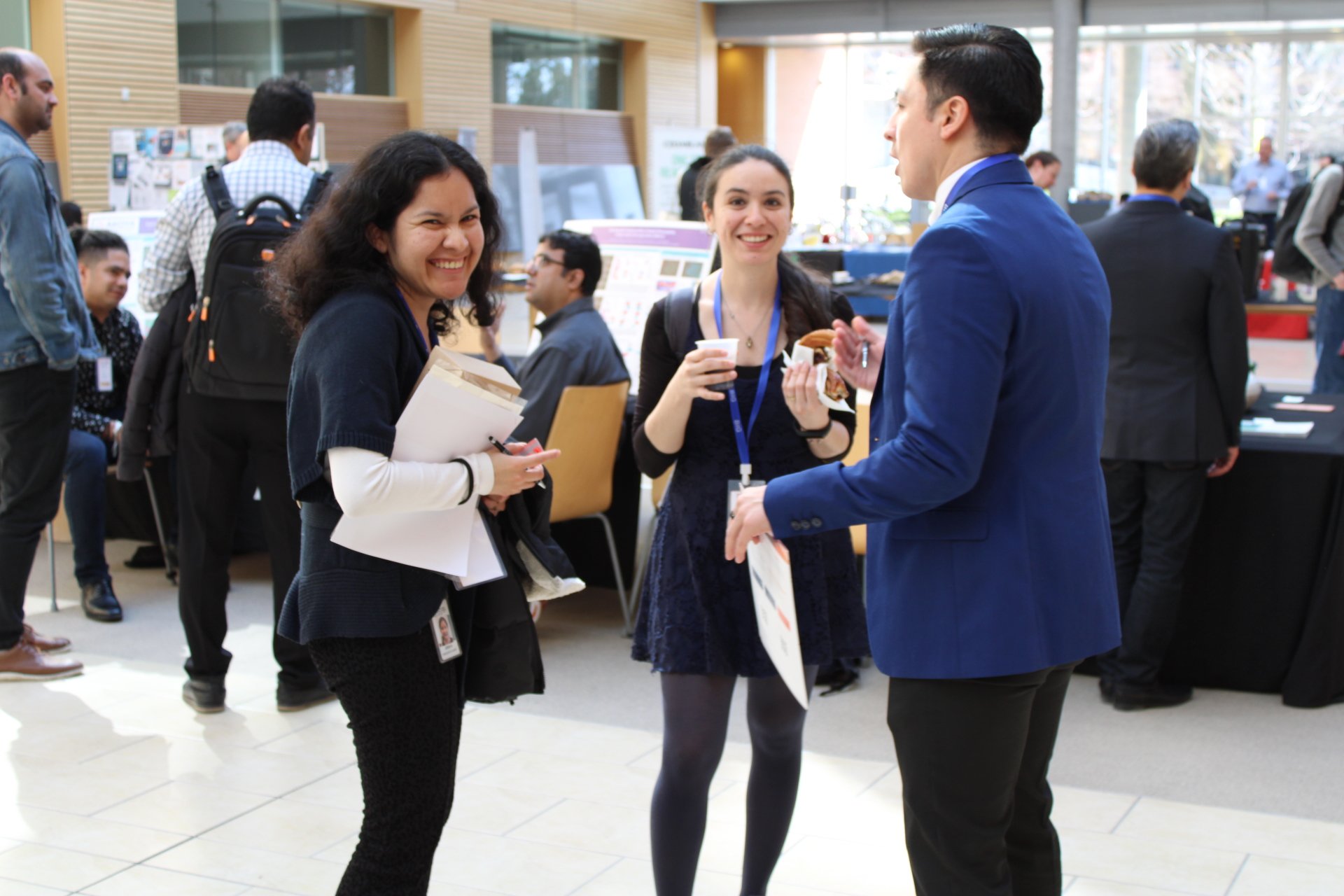
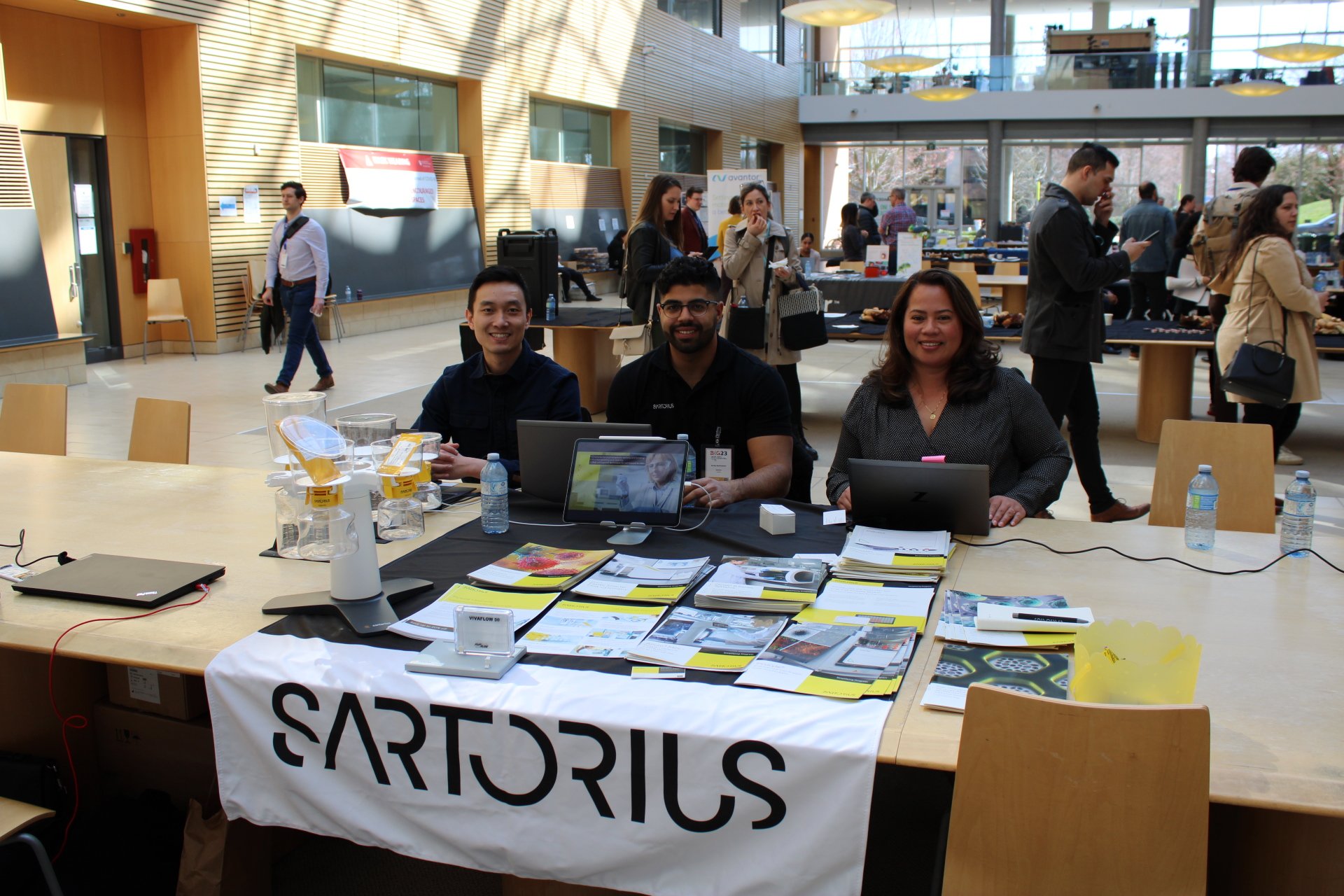
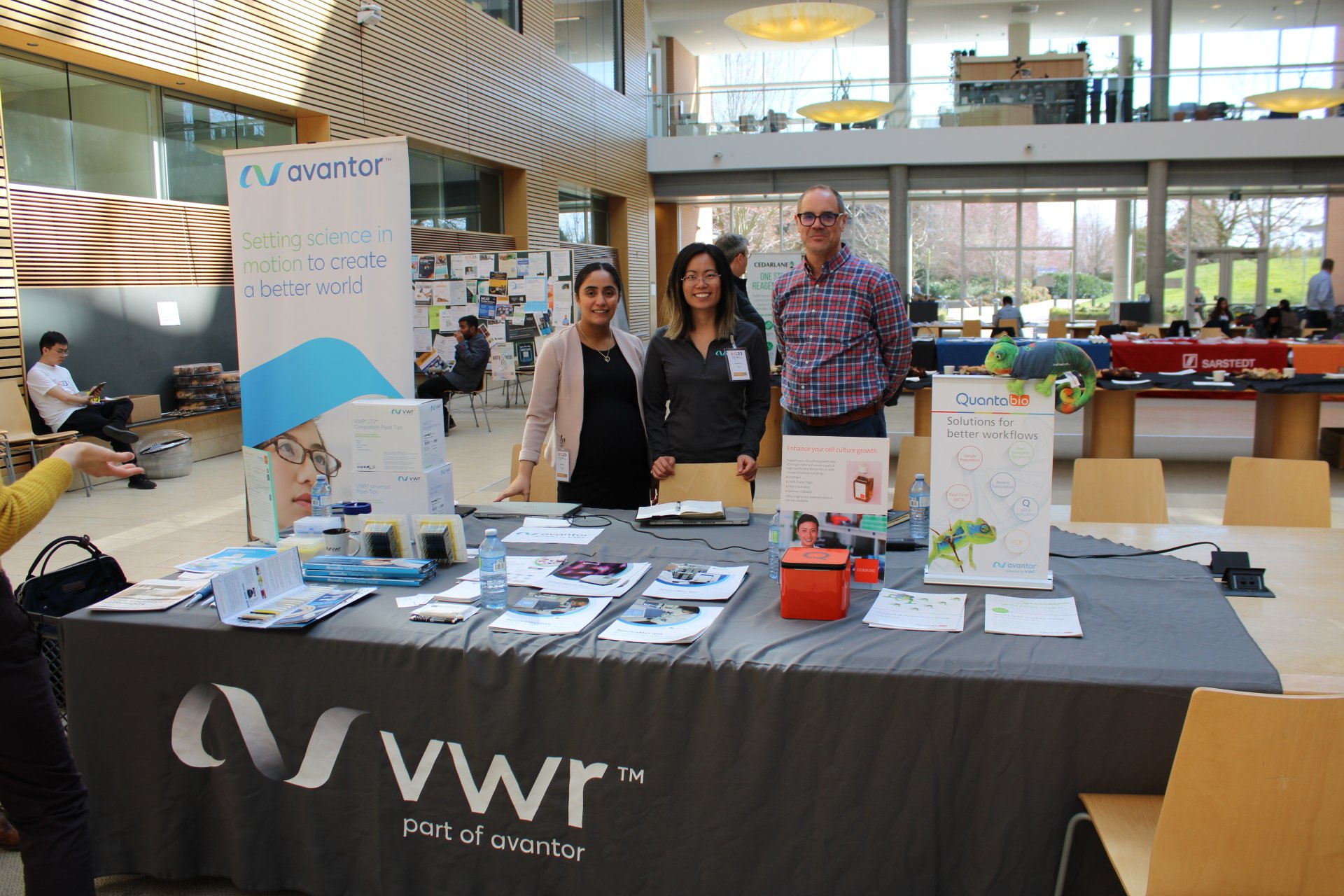
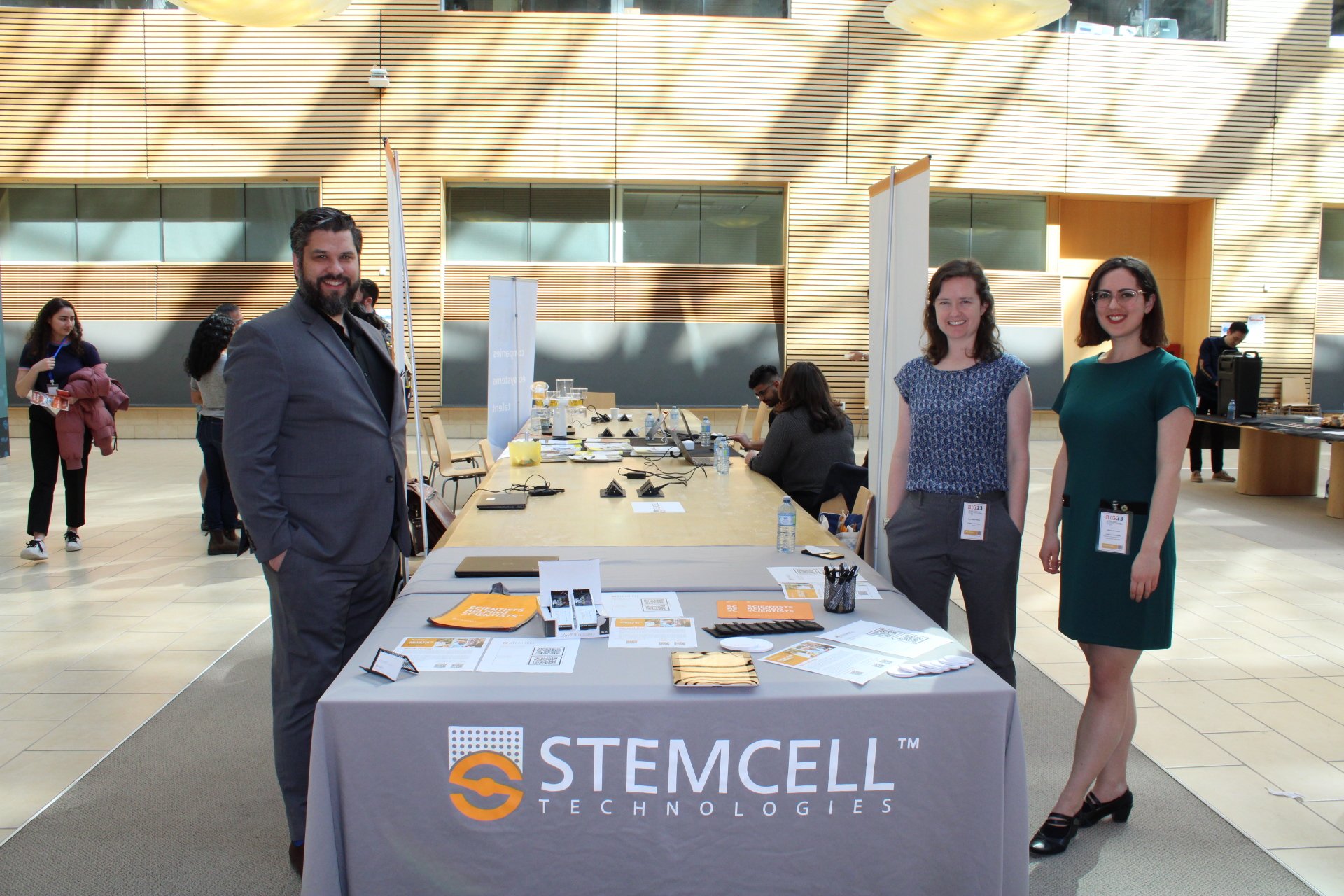


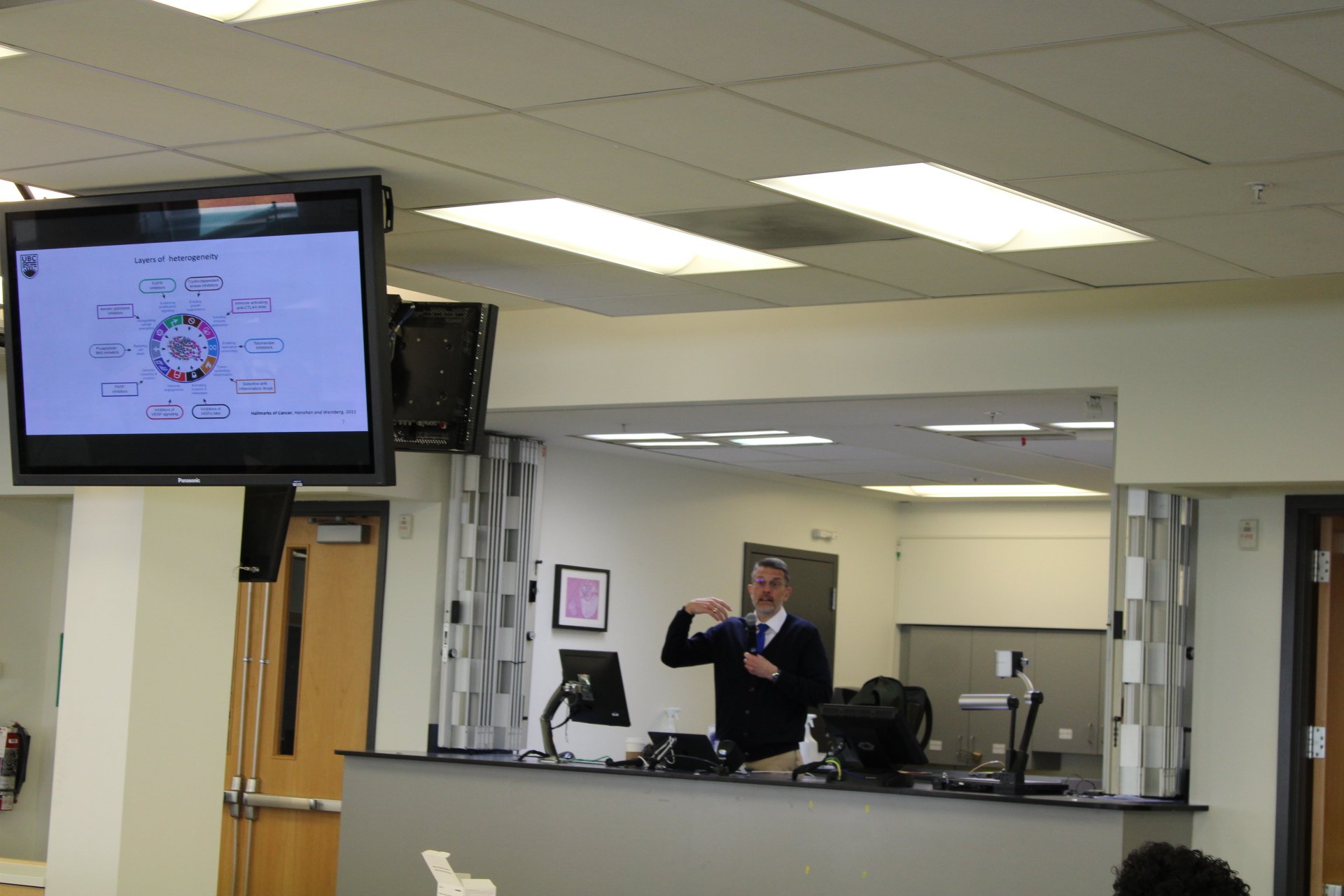
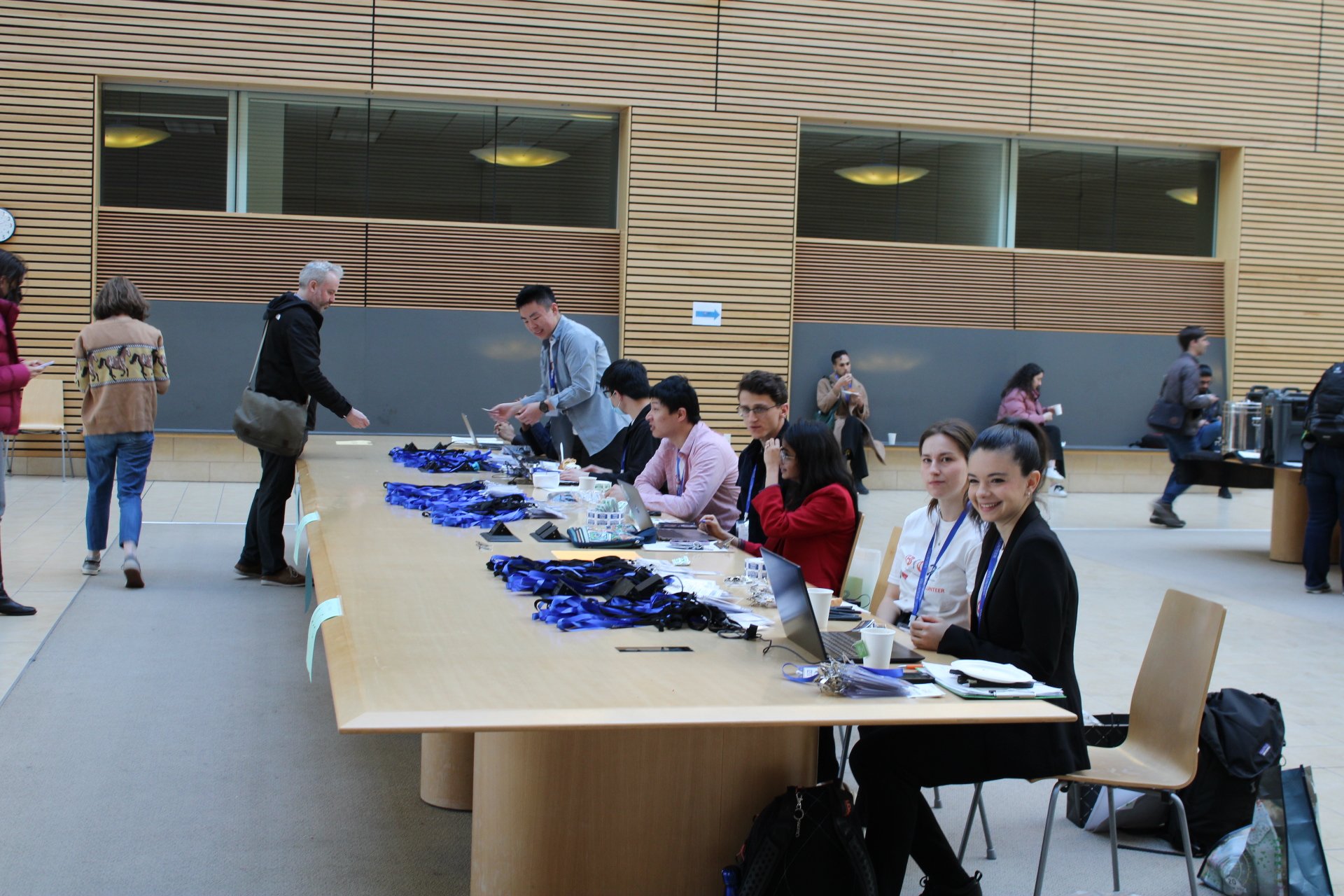

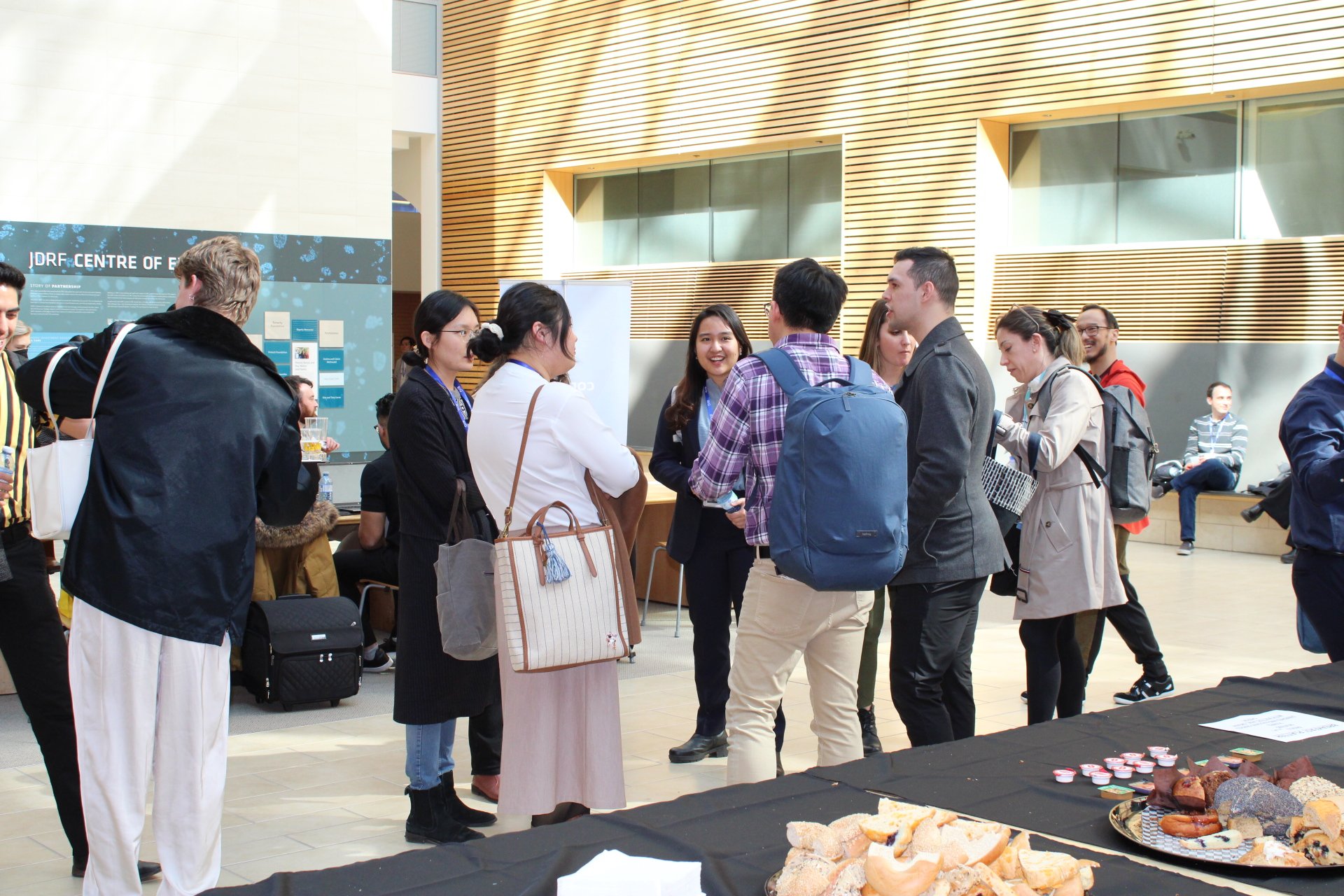
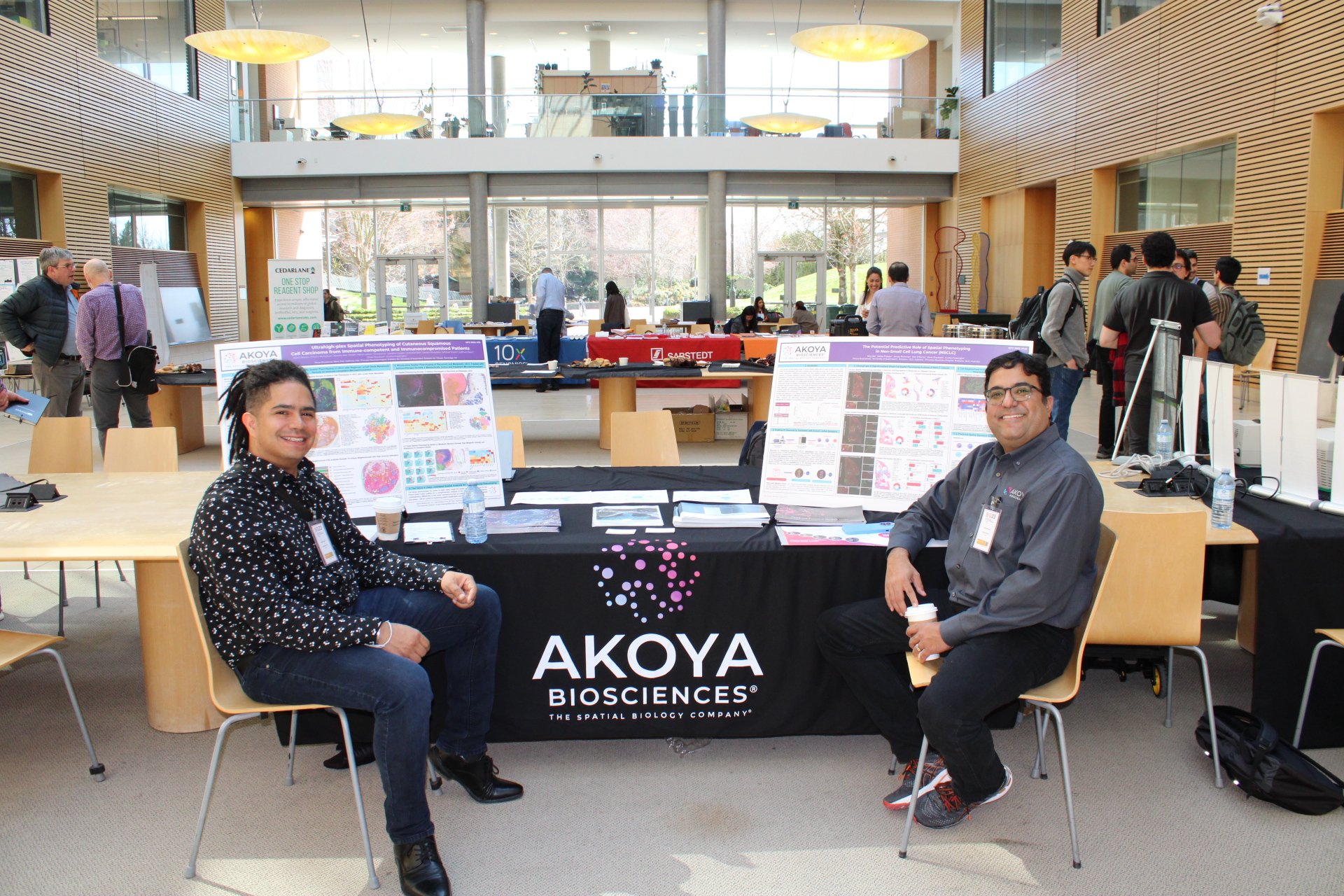

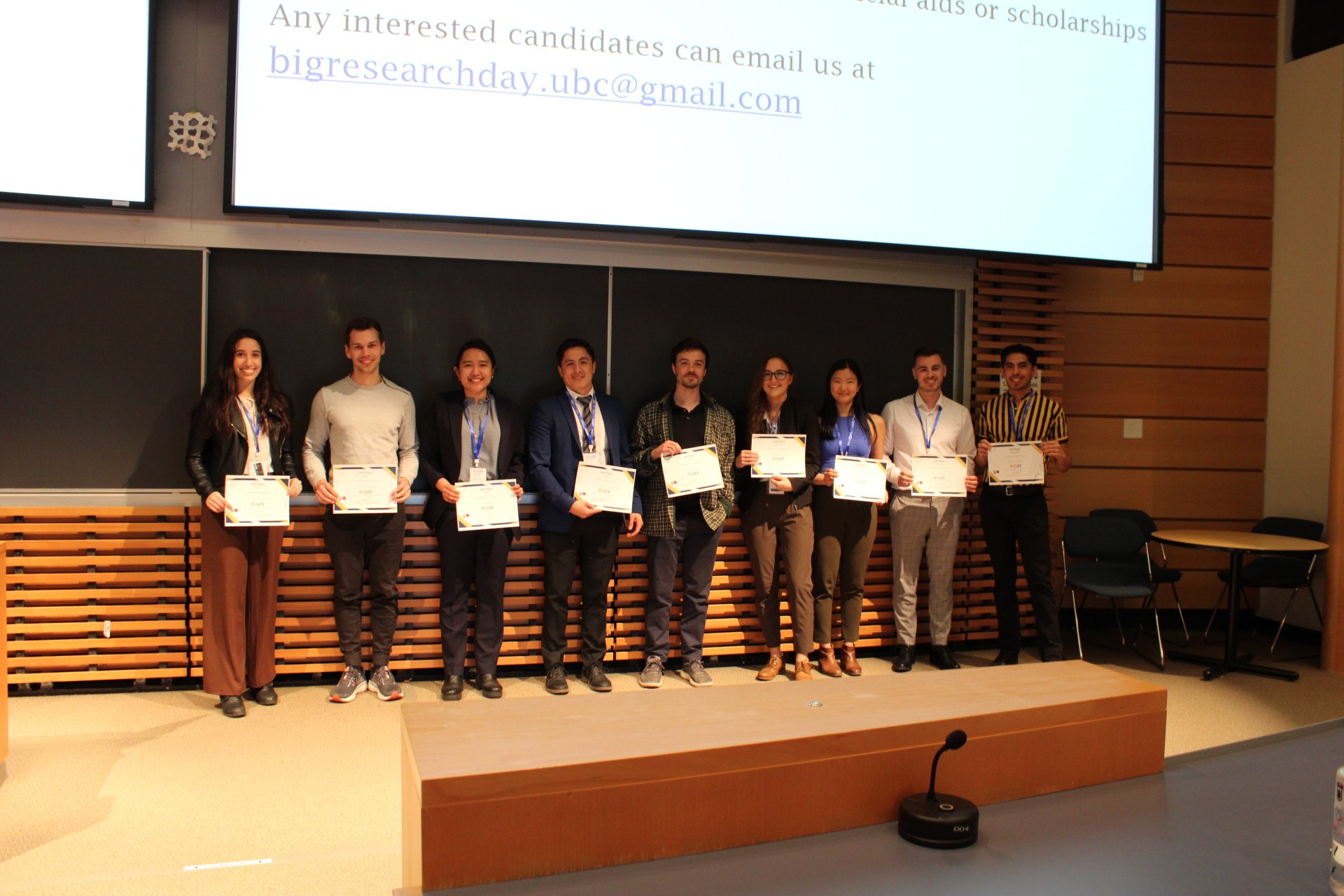
March 28th, 2023 @ Life Science Institute, UBC
BIG2023’s Theme:
Post-transcriptional and Post-translational Modifications in Clinical Settings
430 PARTICIPANTS
140+ STUDENT POSTER PRESENTATIONS
24 TRAINEE SPEED TALKS
1 KEYNOTE
6 PLENARY TALKS
3 INDUSTRIAL TALKS
15+ SPONSORS
2023 Schedule
Keynote Speaker
Dr. Christopher Burge
Professor of Biology at MIT; CSB Program Director; Extramural Member of KIICR; Associate Member of the Broad Institute
Learning the Rules of RNA splicing
In order to better understand the principles that underlie the recognition of splice sites and introns in human cells, we are exploring “white box” (fully interpretable) and “gray box” (more accurate but only partially interpretable) predictive models of splicing. The overall framework of our white box approach is a hidden semi-Markov model architecture in which certain assumptions are relaxed to bring it closer to a mechanistic model. This framework incorporates models of the composition of 5’ and 3’ splice sites, length preferences of introns and exons, and explicit sets of candidate splicing regulatory elements (SREs). In this framework, SREs act to favor or disfavor the choice of nearby splice sites in a manner similar to the known RNA maps for SR proteins, hnRNPs and other splicing regulators. Standard sets of annotated human genes borrowed from the highly accurate “black box” SpliceAI model (1) were used in training and testing. Our framework has a baseline accuracy of ~40% splice sites correct (mean of precision and recall) using newly trained “third-order” MaxEnt models of the core splice site motifs; these models capture dependencies between all triples of nearby splice site positions, enabling prediction of U12-type as well as U2-type splice sites. We observed enormous variation in performance depending on exactly how the SRE scores were derived. Using SRE scores based on the relative abundance of motifs in exons versus introns (2) yielded only modest improvements. However, accuracy improved dramatically, to ~70% splice sites correct, when using SRE scores learned by elastic net logistic regression from abundances in regions adjacent to authentic splice sites relative to those adjacent to strength-matched “decoy” splice sites, suggesting that this approach recovers much more information about SREs. Interestingly, across all tested approaches for SRE scoring, exonic motifs (ESEs/ESSs) contributed far more to accuracy than intronic motifs. Ongoing work seeks to identify new SREs and to apply the framework to insects, plants, and other systems. We are also working with the groups of Armando Solar-Lozano, Osbert Bastani, and Phil Sharp (MIT) to develop more complex and accurate gray box models, which use models of the same splice site regions usd by MaxEnt, combined with RNA-binding protein (RBP) motifs adapted from RNA Bind-n-Seq data in a general machine learning framework to achieve higher accuracy while maintaining the ability to interpret splicing choices based on the contributions of splice site and sparse RBP motifs and associated interactions.
1. Jaganathan et al., Cell 176, 535-548, 2019.
2. Wang et al., Cell 23, 61-70, 2004.
Concurrent Sessions I
Dr. Ly Vu, PhD
Scientist at Terry Fox Laboratory, BC Cancer
Vu Lab
Toward targeting Post-transcriptional Gene Regulation in Myeloid Leukemia
Dysregulation of normal gene expression programs and cellular identities drive cancer development. While somatic alterations in genetic and epigenetic mechanisms have been studied extensively, how processes that affect post-transcriptional and translational regulation impact tumorigenesis is much less well understood. The CCR4-NOT (CNOT) complex is one of two major multi-subunit polyA deadenylation complexes which mediate the shortening of the poly(A) tails. The CNOT complex was found to be recruited to RNA methylation m6A transcripts to mediate mRNA degradation. While deadenylation and the CNOT complex are central to the control of gene expression, their role and mechanisms of action in malignant cells are poorly understood. In the seminar, Dr. Vu will discuss her laboratory’s effort toward understanding the role of the RNA deadenylation complex in myeloid leukemia and developing strategy to exploit these pathways as therapeutic targets for Acute Myeloid Leukemia, a genetically complex and heterogeneous set of diseases with poor survival and morbidity. Insights into these largely unexplored areas could lead to the development of innovative and more effective treatments for AML patients.
Dr. Gregg Morin, PhD
Senior Scientist and the Head of Proteomics at Genome Sciences Center, BC Cancer
Morin Lab
Discovery of pediatric cancer surfaceome immunotherapeutic targets
New therapeutic strategies are needed to combat poor survival rates in metastatic/refractory Ewing sarcoma (EwS) and Osteosarcoma (OS). A comprehensive roadmap of the surface proteome (surfaceome) of these cancers could identify candidate immunotherapeutic targets. Using a density gradient ultracentrifugation method we have profiled the surfaceome of ~20 EwS and ~20 OS patient-derived- and cell line-derived xenografts compared to the surfaceome of common adult cancer cell lines. In parallel, global proteome analysis was performed to complement the surfaceome data and gain information on phenotype variation in the models. All models were analyzed by Tandem Mass Tags (TMT)-based mass spectrometry to quantify protein variation. Our surfaceome approach identified ~1100 high-confidence surface annotated proteins in the EwS and OS models. Confirming the validity of our approach, we identified several proteins, including ADGRG2, ENG, IL1RAP, MMP14, and ROR2, which are all in preclinical development as immunotherapeutic prospects in EwS, OS, or other sarcomas. We also identified many new surface proteins with immunotherapeutic potential in EwS, including CDH11 and ENPP1, and in OS, where the single pass transmembrane protein TMEM119 was identified as a top hit. Immunohistochemistry staining confirmed TMEM119 is expressed almost exclusively in OS, with minimal to no staining detected in a large cohort of normal pediatric tissues. Our future efforts will focus on further validating surface proteins in both datasets, and mechanistically anchoring TMEM119 as an immunotherapeutic prospect in OS patients. We believe our surfaceome/proteome approach is broadly applicable for the identification of plasma membrane immunotherapy candidates across cancers.
Dr. Marco Marra, PhD, FRS(C), FCAHS, OBC
Distinguished Scientist at Genome Sciences Center, BC Cancer
Marra Lab
The Genomics of Treatment Resistant Cancers
Two decades of cancer genome science have revealed unanticipated DNA sequence-level heterogeneity across cancers. To personalize cancer therapies, state of the art approaches, capable of revealing genomic heterogeneity on a case-by-case basis, are required. I will provide a brief overview of British Columbia's Personlized OncoGenomics (POG) program, in which whole genome and transcriptome sequencing are being used to inform cancer patient treatment planning. I will also discuss how newer genomic technologies, including single cell sequencing, may be relevant to the POG program.
Concurrent Sessions II
Dr. Calvin Yip, PhD
Assistant Professor at Department of Biochemistry & Molecular Biology, University of British Columbia
Yip Lab
Investigating the molecular structures and dynamics of histone acetyltransferase complexes
Genomic DNA of eukaryotic cells is packaged in the form of a DNA-protein complex known as chromatin. Such organization not only condenses genomic DNA to fit within the nucleus but also provides a means to control accessibility of the transcription machinery to different parts of the genome. One key mechanism to alter chromatin structure and thereby gene expression is through post translationally modification of the major chromatin proteins called histones. While much is now known about the distribution of different histone post translational modifications (PTM’s) in the genome and how they affect gene expression, how these modifications are established and maintained at unique histones is not fully understood. Chromatin-modifying complexes are large-sized multi-protein molecular machineries that add PTM’s to or remove PTM’s from distinct histones. A better understanding of the biochemical and molecular structural properties of these sophisticated assemblies will shed light on how histones PTM’s are precisely deposited and removed from the genome. In this talk, I will present data from our recent work on yeast SAGA and NuA4, two histone acetyltransferase (HAT) complexes that modifies histones H3, H2A/H2A.Z/H4, respectively. I will highlight how recent advances in cryo-electron microscopy molecular imaging, recombinant expression systems, structural proteomics, and machine learning-based structural modeling enabled us to advance our knowledge on the overall architecture, subunit organization, and conformational dynamics of these elegant protein nanomachines critical to transcription regulation and epigenetics.
Dr. Philipp Lange, PhD
Assistant Professor of Pathology & Computer Science, University of British Columbia
Lange Lab
Protein dynamics and modification in childhood cancer
Precision treatments that specifically target molecular alterations in cancer have significant potential to improve therapy options for hard-to-treat cancers and reduce late effects in general. The expansion of next-generation sequencing and whole genome analysis has rapidly expanded our knowledge about cancer-driving genomic changes and has laid the foundation for precision medicine. Yet, clinical success remains moderate. This is particularly true for childhood cancers, which, as we are only beginning to appreciate, are fundamentally different from adult malignancies. Simply applying the lessons learned from adult malignancy is not necessarily an effective approach to pediatric disease.
Here I discuss how the proteome, the place most targeted drugs act on, is shaped in ways invisible from the genome level. I present recent work by our group describing how post-translational modification of proteins by proteolysis shapes the cells and their microenvironment in childhood acute lymphoblastic leukemia. To better understand cancer evolution and optimal diagnostic timepoints I next explore changes and stability in proteome dynamics between initial diagnosis and subsequent relapse of children with B-cell leukemia. Asking the question, if proteome profiling can complement genome analysis for treatment stratification in a clinically meaningful timeframe, we find that protein and pathway level analysis does prioritize treatment opportunities for single and combination agent therapies invisible at the genome level and can inform patient care.
Dr. Charlie Stevens, PhD
Senior Scientist in STEMCELL Technologies
STEMCELL Technologies
Structural Bioinformatics and its Role in Industrial Protein Development
Computational biology has a number of applications across product development activities in industry. Recent leaps forward in protein technologies have given us the ability to predict structures from sequences with unprecedented accuracy and even generate completely novel folds that can satisfy arbitrary criteria. We leverage structural information to identify and modify functional regions of existing proteins in order to improve or ablate functions, or enhance the thermal stability and solubility of proteins that are challenging to express and purify. The application of these computational methods to optimize the function, expression, purification, and stability of our recombinant proteins and antibodies results in a product portfolio built on components that are effective and robust, while reducing development time and allowing for scalable protein production.
Alumni Talks
There be dragons here: navigating the uncharted waters of grad school and beyond
Graduate school can present unique and complex challenges, but it's also a journey full of opportunities and growth. Through my personal experiences, I've learned the importance of being flexible, pursuing every opportunity, and building a strong support system. I will share my journey through graduate school and beyond, highlighting the unexpected forms that success can take even in the face of setbacks and difficulties. Whether you're just starting your graduate journey or are already on your way, I hope to offer valuable insights and inspiration that will help you navigate these murky waters.
Dr. Tal Shalev, PhD
GSAT Alumni
Postdoctoral Researcher, MSL, UBC
Hindsight is 20/20: practical tips on career development while in graduate school
I see graduate school as a challenging quest that forces us to face ambiguity both scientifically and personally. Identifying an optimal career path is just another unknown we have to figure out. During my PhD, I have experimented with 6 different career tracks, and learned a lot about myself and the opportunities that are out there. I will walk you through my PhD journey, discuss the choices I have made, and reflect on what worked (and what did not). I will share advice that I wish was given to me, and hopefully provide you with a roadmap towards your dream job.
Dr. Sonya Langman, PhD
IOP Alumni
Incoming Consultant, Boston Consulting Group
How to forge your own Swiss knife through grad school and beyond
Professional and personal growth go hand-in-hand during graduate school. This is a time to discover what drives you as a person, and use these insights to forge the set of “Swiss knife tools” that define your professional career. During my graduate studies and now as an early-career industry scientist, this mindset has been instrumental in helping me figure out the present while making me prepared for the future. In my talk I will share some meandering thoughts on how I identified and pursued my version of success and happiness, with the hopes that you find some of those processes useful too.
Industry talks
Empowering Impactful Science with Leading Edge Single Cell, Spatial, and In Situ Technologies
The vast complexities of biology require approaches to build a complete picture, starting from single cells to tissues and beyond. At 10x Genomics, we provide single cell, spatial, and in situ technologies that fuel scientific discoveries and drive exponential progress. Unravel highly complex biological systems, while bringing into focus the details that matter most.
Join us to learn how Chromium Single Cell, Visium Spatial, and Xenium In Situ platforms from 10x Genomics can help you push the boundaries of your research. Uncover molecular insights, dissect cell-type differences, investigate the adaptive immune system, detect novel subtypes and biomarkers, and map the epigenetic landscape cell by cell. Enabling deeper insight into cancer, immunology, neuroscience, and developmental biology, 10x Genomics gives researchers the ability to see biology in new ways.
10X GENOMICS
Website
Bio-Rad: Who We Are and What We Do
Bio-Rad is a global leader in developing, manufacturing, and marketing a broad range of innovative products for the life science research and clinical diagnostic markets. With a focus on quality and customer service for 70 years, our products advance the discovery process and improve healthcare. Our customers include university and research institutions, hospitals, public health and commercial laboratories, biotechnology, pharmaceutical, as well as applied laboratories that include food safety and environmental quality.
In our presentation, we will show a brief video describing Bio-Rad’s core values. We will also introduce the local Bio-Rad team. Following that will be quick introductions to our industry leading instruments, software, consumables, and reagents. We will also discuss how researchers can use Bio-Rad’s support during experimental design, assay development, and troubleshooting. Lastly, we will discuss the various career opportunities at Bio-Rad and how potential candidates can search for open positions.
BIO-RAD
Website
SPONSORS
ACKNOWLEDMENTS
We really appreciate the help from Life Sciences Institute, Michael Smith Lab, UBC Graduate Student Society, Copy Smart, Koerner’s pub, Staples, CAN-WEST Display, Maxi’s deli and Emelle’s Catering.
We also want to say thanks to the B.I.G programs, speakers, judges, volunteers and all the attendees.












